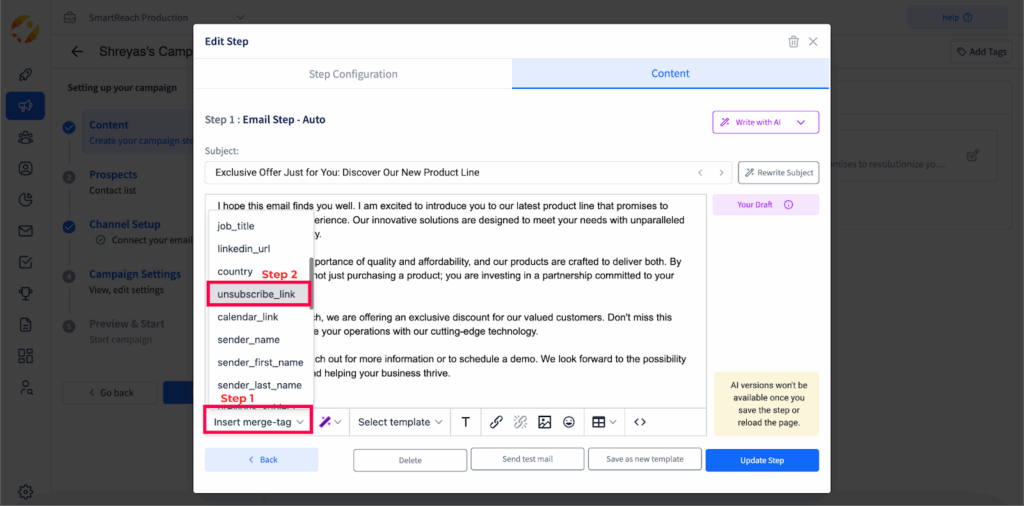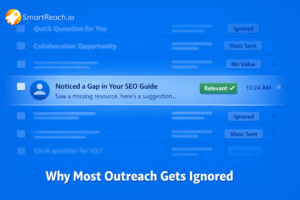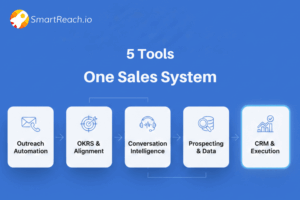Why Hidden or Unclear Unsubscribe Links Hurt Email Deliverability
Ever had someone manually mark your email as spam just because they couldn’t find the unsubscribe button?
It happens more often than you’d think.
And every spam complaint chips away at your sender reputation, even if your email content is solid.
Missing unsubscribe links in emails is a big problem.
If it’s missing, hidden, or confusing, people get frustrated and manually hit ‘Mark as Spam.’
That single click hurts your reputation, lowers deliverability, and makes it even harder for future emails to reach inboxes.
In this blog, we are going a little deeper to understand why an unclear unsubscribe link sends your email to spam and how it can be avoided.
How spam filters judge unsubscribe practices
Email providers like Gmail, Outlook, and Yahoo don’t just check technical settings they look for clear unsubscribe options as a trust signal.
Here’s what happens:
- Spam filters scan your email for compliance markers. A visible, simple unsubscribe link is a big one.
- Gmail’s algorithms downgrade emails with hidden or confusing opt-out links.
- Data backs this up: Return Path’s 2024 report shows compliant emails hit 89% inbox placement vs. 67% for non-compliant ones.
It’s not just the link, it’s behavior.
If users mark your emails as spam instead of unsubscribing, inbox providers take it as a red flag.
Almost all major email compliance rules like CAN-SPAM, GDPR, and CASL require easy, no-hassle opt-outs for email recipients.
If your process takes multiple steps or needs logins, spam filters assume shady practices.
What happens when recipients can’t find unsubscribe links?
When prospects cannot easily opt out, this friction damages brand perception and drives negative engagement signals that hurt your entire email program.
Let me break down exactly how this seemingly small oversight can devastate your email performance.
#1 Frustrates recipients and drives negative behavior
When people decide to stop receiving your emails, they expect a quick way out.
This expectation isn’t unreasonable; it’s basic courtesy in digital communication.
Making them hunt for the unsubscribe link breeds immediate irritation.
Recipients scan email footers looking for familiar words like “unsubscribe” or “opt out.” When they can’t find these quickly, frustration builds.
They might try looking in email headers, search for tiny text, or scroll through dense legal language.
This hunt wastes their time and creates a negative final impression of your brand. Even if they eventually find the link, the damage to their perception is already done.
#2 Pushes people to mark you as spam
When unsubscribing feels like a maze, the easier option is to hit “Mark as Spam.”
Email providers weigh these complaints heavily. Just one spam complaint can hurt more than dozens of positive opens.
#3 Damages sender’s reputation with measurable business impact
Think of sender reputation like a credit score.
Spam complaints are toxic, and rates above 0.1% (1 per 1,000 emails) raise flags. At 0.3% or higher, inbox providers may start filtering your emails automatically.
- Emails with clear, single-click unsubscribe links see 23% fewer complaints and 15% better deliverability.
- A few weeks of high complaint rates can take months to repair—sometimes you never fully recover.
#4 Triggers compliance risks with serious financial consequences
Laws like CAN-SPAM, GDPR, and CASL require a working unsubscribe mechanism.
The penalties are steep:
- CAN-SPAM: up to $51,744 per email
- GDPR: 4% of annual revenue
- CASL (Canada): up to $10M
And if your email service provider thinks you’re a liability, they can suspend your account overnight.
Recommended Read: Email Compliance Laws: Definitive Legal Guide for Marketers
#5 Creates measurable ROI impact on email programs
People who can’t leave simply stop engaging, tanking open and click rates.
Inbox providers interpret low engagement as a sign that your emails don’t deserve prime inbox placement.
- For 100,000 monthly sends:
- Poor opt-out UX = 0.3% spam rate (300 complaints)
- Single-click opt-out = 0.1% (100 complaints)
- Result: 5–8% more emails in inbox, adding $15K–$30K to pipeline monthly.
- Poor opt-out UX = 0.3% spam rate (300 complaints)
The paradox: trapping unwilling subscribers doesn’t help your list grow—it weakens it for the people who actually want to hear from you.
How do spam filters detect missing unsubscribe options?
Unsubscribe options are one of the clearest signals of legitimacy, and spam filters are ruthless about enforcing them.
Here’s how they catch you:
- Instant compliance scans: The moment your email hits Gmail, Outlook, or Yahoo, machine learning models compare it to millions of examples. If they don’t see a clear, standard unsubscribe link, you’re already on thin ice.
- Pattern recognition: Tricks like tiny fonts, low-contrast colors, or hiding the link in a wall of legal text don’t work. Filters are trained to spot these patterns automatically, even faster than a human could.
- Behavioral feedback: If recipients keep hitting “Mark as Spam” instead of using your opt-out link, algorithms take the hint. They assume your unsubscribe process is broken or intentionally difficult and start pushing more of your emails to junk.
Modern filters see through any attempt to hide or downplay opt-outs. If unsubscribing isn’t effortless, inbox providers treat your messages like spam, no exceptions.
Single-click unsubscribe link
The best unsubscribe link is dead simple, one click and the person is off your list.
No confirmation pages.
No email re-entry. No account login. Just gone.

What this looks like in practice:
- Recipient clicks the link.
- They’re instantly removed; no extra steps, no second-guessing.
This frictionless approach does more than meet compliance requirements; it builds real trust.
When people know leaving is easy, they’re less likely to bail impulsively. It’s a bit of psychology at work: when people feel trapped, they look for escape routes; when they feel free to leave, staying feels like a choice.
Placement is just as critical as the method. Your unsubscribe link should:
- Sit prominently in your footer (not hidden in micro-text).
- Use a readable font and strong contrast.
- Stand alone – not buried with “Manage Preferences” or “Update Profile.” Those are nice extras, but they should never be the only way to opt out.
Tips for effective unsubscribe links
An unsubscribe link isn’t just a checkbox for compliance, it’s a signal to inbox providers that you respect recipients.
Here’s how to do it right:
1. Make it visible.
- Use at least 12pt font (bigger than the rest of your footer text is even better).
- Ensure a strong color contrast so it doesn’t blend in.
2. Use plain language.
- Stick with “Unsubscribe.”
- Avoid vague terms like “Manage preferences” or “Update communication settings.” People scan for the word they know.
3. Add it to every marketing email.
- Newsletters, promos, product updates, include it all.
- Only true transactional emails (like password resets or receipts) don’t need one.
4. Test it regularly.
- Send test emails to yourself and actually click through once a month.
- Catch broken links before they turn into spam complaints.
5. Put it in the header too (optional).
- Some email clients show header unsubscribe links right at the top, making it even easier for recipients to opt out.
6. Process requests instantly.
- Legally you have 10 days under CAN-SPAM, but waiting risks more complaints.
- Remove people immediately after they click.
7. Don’t ask for feedback on the way out.
- Adding a “Why are you leaving?” step just annoys people.
- If you want feedback, send a short survey after they’re already removed.
How SmartReach.io makes unsubscribing simple and compliant
Managing unsubscribe links can feel tedious when you’re running multiple campaigns, but SmartReach.io makes it effortless without limiting personalization.
The platform gives you two easy ways to add unsubscribe options, so you stay compliant while keeping your emails on-brand:
- Add an unsubscribe link directly in your email body using a simple merge tag ({{unsubscribe_link}}). Place it anywhere you like in your message for maximum visibility.

- Set it once in campaign settings so it appears automatically at the end of every email in that campaign. You can customize the text to match your tone while ensuring every message includes a working opt-out link.

If you use both methods, SmartReach.io includes both links automatically, so you’ll never miss compliance by mistake.
Once someone clicks to unsubscribe, their request is honored across all your campaigns immediately, preventing future emails and protecting your sender reputation.
Because these options are built right into SmartReach.io, you meet global email regulations like CAN-SPAM, GDPR, and CASL without extra work.
No coding, no manual tracking, just straightforward compliance that keeps your outreach clean and your deliverability high.
With SmartReach.io, your recipients always have a clear, frictionless way to opt out, which means fewer spam complaints and better inbox placement for the emails that matter.
Try SmartReach.io FREE for 14 days (no credit card required for sign-up)
Frequently asked questions about unsubscribe compliance
Why do I get more spam emails when I unsubscribe?
Some spammers use fake unsubscribe links to confirm your email address is active. When you click, they know you’re real, which can lead to even more spam. If you recognize the sender as legitimate, unsubscribing is fine. But if it’s from an unknown or suspicious source, it’s safer to mark it as spam instead.
What happens if you click an unsubscribe link from a spam email?
In the best case, nothing happens. In the worst case, you could confirm your email address to the spammer or land on a malicious page that tries to steal your information. Use your email provider’s “Report Spam” button for unknown or shady senders.
How do I get spam emails without an unsubscribe link?
Real businesses include unsubscribe options to comply with laws like CAN-SPAM and GDPR. If there’s no link, the message is likely from a spammer or an unregulated source. These senders don’t care about compliance and often scrape emails from the web.
Why shouldn’t a user click unsubscribe links from spam messages?
Because you can’t trust where the link leads. A legitimate unsubscribe will stop messages, but a fake one could lead to malware, phishing attempts, or more spam. It’s safer to block the sender or report the email as spam.
How do I stop emails from automatically going to spam?
Mark important emails as “Not Spam” in your inbox, add trusted senders to your contacts, and check your filters or rules. For marketing emails you want, make sure you opted in with a valid address and whitelist them if your email client allows it.
How do I stop spam email subscriptions?
If the emails are legitimate (from real businesses), use the unsubscribe link at the bottom. If they’re shady or have no link, block the sender, report as spam, or use your email provider’s spam filters. Disposable email addresses are useful for testing signups.
What is the hidden risk of clicking unsubscribe?
Beyond confirming your email is valid, a fake unsubscribe link could redirect you to a malicious site or start a download you didn’t expect. This is why security experts recommend avoiding links in emails from unknown senders.
How to permanently stop getting spam emails?
You can’t stop 100% of spam, but you can reduce it significantly by using spam filters, reporting unwanted messages, unsubscribing from legitimate senders, and avoiding sharing your email address publicly. For extreme cases, creating a new email address and being selective about where you use it helps.
How do I report a company that won’t unsubscribe?
If a legitimate business keeps emailing you after you’ve unsubscribed, you can file a complaint:
- In the US: Report to the FTC at ftc.gov/complaint.
- In the EU: Contact your local data protection authority under GDPR.
- In Canada: Report to the CRTC under CASL.
You can also block the sender and mark future emails as spam to protect your inbox.




